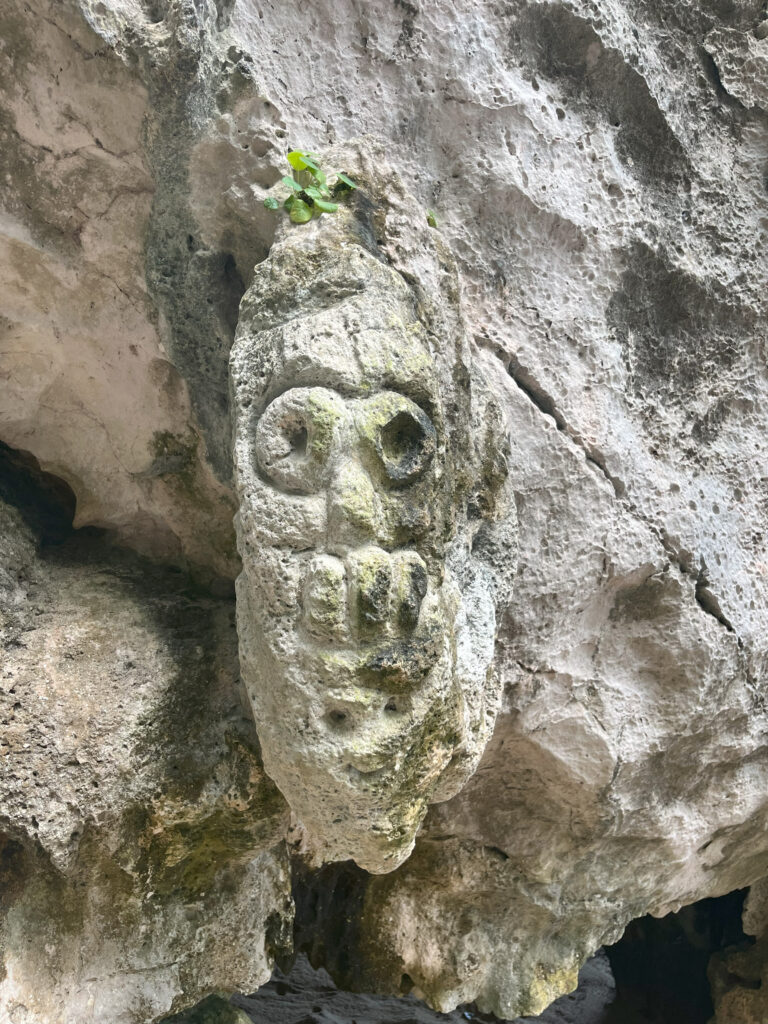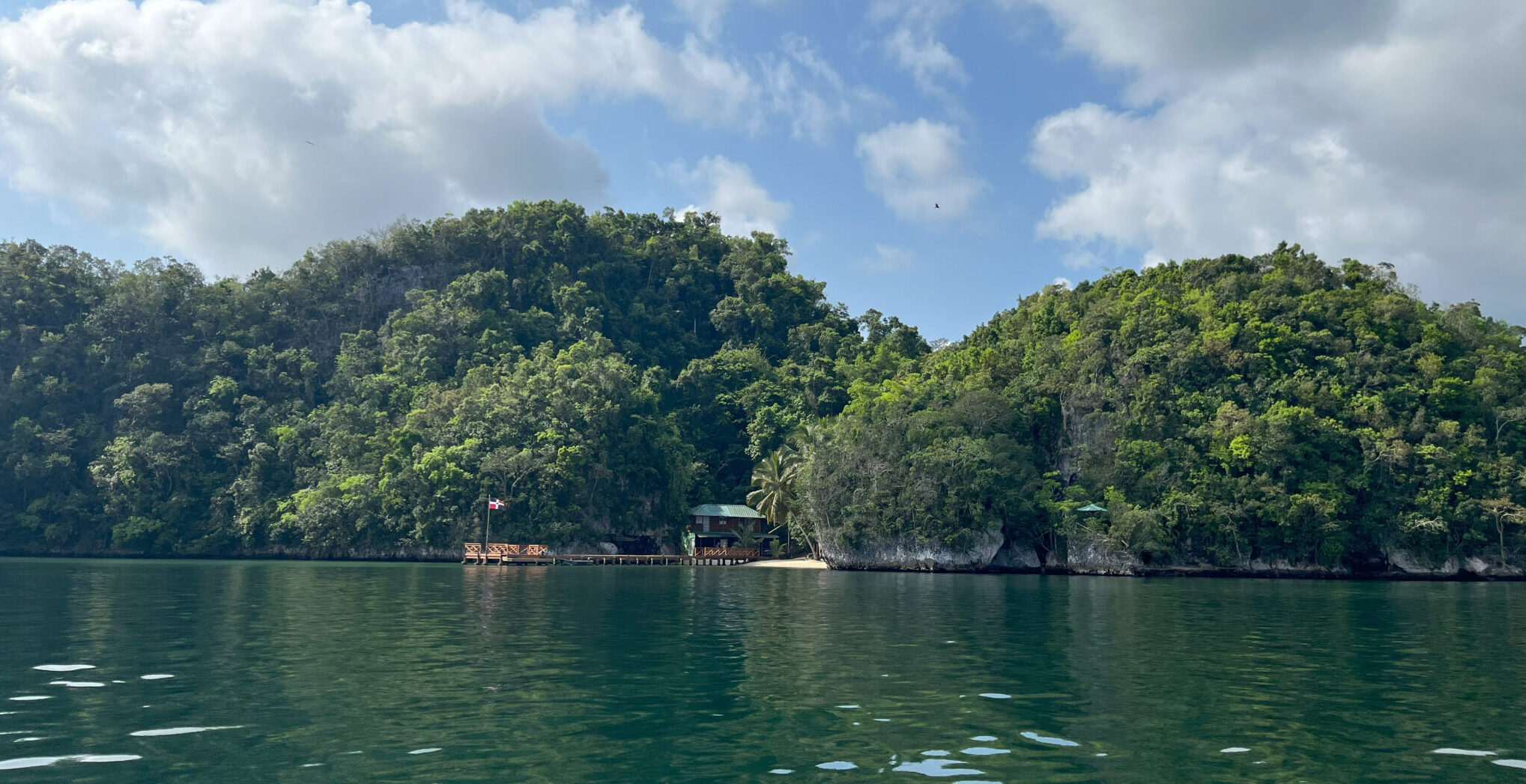Los Haitises National Park is one of the crown jewels of the Dominican Republic’s park system. Los Haitises (“hilly land” in the indigenous Taino language), was a sacred place for its pre-Columbian inhabitants. Magnificent rock formations jut out of the water; there are extensive mangroves, tiny islands that are home to bird colonies, and caves with stunning petroglyphs and pictographs. Los Haitises also nurtures one of the DR’s few remaining rainforests.
Within the park, mangrove forests surround brackish San Lorenzo Bay. All four of the DR’s mangrove species, including red mangroves, which tower to nearly 50 feet, live there. The bay is rich in oysters and crustaceans, and it teems with bird life, including the endemic Hispaniolan hawk. The endangered Antillean manatee and locally endangered fish species live in the bay.
The San Lorenzo Bay fishers’ cooperative, based in the community of Sánchez on the Samaná Peninsula, works on sustainable shrimp farming and fishing, sells environmentally friendly fishing gear, and conducts kayak tours through the mangroves. (They’ve gotten help from 2018 Seacology Prize recipient Patricia Lamelas’ organization, CEBSE.) The tours, which give visitors a rare view inside an intact and spectacular mangrove ecosystem, have been very popular. Guiding tourists also gives local people a way to earn a living without unsustainable fishing, and lets them monitor (with park staff) the mangrove area to prevent illegal fishing.
Last year, an electrical fire seriously damaged the coop’s office and storage space. The coop is using a Seacology grant to rebuild its valuable kayak tourism and to support an associated group of women who prepare and sell fish products.



























